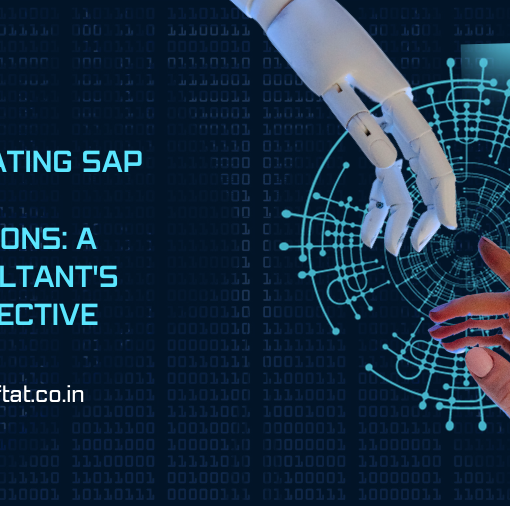What is IDoc used for: Your Gateway to Seamless Data Exchange
In the intricate world of enterprise resource planning (ERP) systems, seamless data exchange plays a critical role in streamlining operations, fostering collaboration, and optimizing your business processes. While various tools and technologies facilitate this exchange, IDocs (Intermediate Documents) hold a unique and vital position within SAP landscapes. This in-depth blog delves into the multifaceted world of IDocs. What is IDoc used for? exploring their functionalities, usage scenarios, and how they empower businesses to unlock the full potential of their data exchange capabilities.

Understanding the Landscape: What are IDocs?
Imagine IDocs as standardized electronic containers carrying business data within the SAP ecosystem. They act as intermediaries, transforming data stored in SAP into a format suitable for external exchange, often adhering to Electronic Data Interchange (EDI) standards. Simply put, IDocs enable your SAP system to “speak” with other systems, be it internal applications, partners, or external platforms, ensuring smooth and accurate data flow.
Beyond Basics: Key Functionalities of IDocs
- Data Mapping: IDocs bridge the gap between internal SAP data structures and external formats, often employing pre-defined or custom mappings to ensure accurate data translation.
- Standard and Custom IDocs: Predefined standard IDocs exist for common transactions like invoices or purchase orders. For specific needs, custom IDocs can be developed to cater to unique data exchange requirements.
- Inbound and Outbound Flow: IDocs handle both inbound data (received from partners) and outbound data (sent to partners), facilitating two-way communication and data synchronization.
- Message Control and Processing: SAP’s message control system manages IDoc flow, ensuring data is delivered reliably, errors are handled effectively, and audit trails are maintained.
Unveiling the Benefits: Why Use IDocs?
- Enhanced Efficiency: Automating data exchange through IDocs saves time and effort compared to manual processes, streamlining communication and reducing workload.
- Improved Accuracy: Standardized formats and controlled data exchange minimize errors and ensure data consistency, fostering trust and collaboration with partners.
- Reduced Costs: Eliminating manual data entry and minimizing errors contribute to significant cost savings, improving operational efficiency.
- Faster Transactions: Real-time data exchange through IDocs accelerates business processes, leading to quicker order fulfillment, faster invoicing, and improved responsiveness.
- Stronger Partner Relationships: Seamless data exchange fosters improved communication, collaboration, and trust with trading partners, strengthening business relationships.
Exploring Usage Scenarios: Where do IDocs Shine?
- Supply Chain Management: Exchange purchase orders, invoices, inventory data, and shipping notifications electronically with suppliers and logistics providers.
- Customer Relationship Management (CRM): Share customer data, orders, and invoices with external CRM systems for enhanced customer service and experience.
- Human Capital Management (HCM): Exchange employee data, payroll information, and benefits information with external systems for streamlined HR processes.
- Financial Management: Automate electronic payments, reconcile invoices, and exchange financial data with banks and other financial institutions.
- E-commerce Integration: Integrate your SAP system with online marketplaces and shopping carts for seamless order processing and inventory management.
Beyond the Standard: Advanced Techniques and Considerations
While we’ve covered the fundamentals, advanced users can leverage further capabilities:
- Multi-Level Mapping: Handle complex data structures with nested segments and elements for intricate data exchange scenarios.
- Conditional Mapping: Apply different mapping rules based on specific data conditions, ensuring flexible and dynamic data transformation.
- Advanced Error Handling: Define custom error responses and retry mechanisms for robust data exchange management.
- Security Enhancements: Utilize encryption and digital signatures to safeguard sensitive data during transmission and maintain data integrity.
Choosing the Right Path: Navigating the IDoc Ecosystem
With various pre-configured solutions, custom development options, and evolving standards, deciding on the optimal approach requires careful consideration:
- Evaluate your needs: Assess the complexity of data exchange, trading partner landscape, and internal resources.
- Consult the experts: Collaborate with experienced SAP professionals to guide your implementation and configuration.
- Stay updated: Keep pace with evolving EDI standards and SAP releases to ensure optimal performance and security.
The Future of IDocs: Staying Ahead of the Curve
The world of data exchange is dynamic, and IDocs continue to evolve:
- Cloud-based solutions: The increasing adoption of cloud-based EDI platforms offers scalability, flexibility, and easier integration with IDocs.
- Standardization and simplification: Ongoing efforts to streamline EDI standards and simplify IDoc configuration aim to enhance ease of use.
- AI and Machine Learning: AI-powered tools can automate tasks like data mapping and error detection, improving efficiency and accuracy.
Beyond the Technical: The Real Impact of IDocs
By harnessing the power of IDocs, businesses unlock a realm of opportunities:
- Improved Business Agility: Faster and more accurate data exchange fosters quicker decision-making and enables businesses to adapt to changing market conditions and customer demands.
- Enhanced Competitiveness: Streamlined processes, faster transactions, and reduced costs contribute to a competitive edge in today’s dynamic business landscape.
- Stronger Partnerships: Seamless data exchange builds trust and fosters collaboration with partners, leading to mutually beneficial relationships and growth.
- Data-Driven Decisions: Accurate and timely data exchange empowers businesses to make informed decisions based on real-time insights, optimizing operations and maximizing profitability.
Unlocking the Potential: Getting Started with IDocs
Whether you’re a seasoned SAP user or new to the landscape, here are key steps to leverage IDocs effectively:
- Identify your data exchange needs: What data needs to be exchanged with whom, and how frequently?
- Assess your internal resources: Do you have the expertise to manage IDocs in-house, or do you need external support?
- Review available solutions: Explore pre-configured IDoc solutions, custom development options, and cloud-based services.
- Seek expert guidance: Consult with experienced SAP professionals to tailor an approach that aligns with your specific needs and goals.
- Test and validate: Thoroughly test your IDoc configurations before going live to ensure data accuracy and smooth functioning.
Remember: IDocs are not just technical tools; they represent a strategic asset for enhanced communication, streamlined operations, and data-driven decision-making. By understanding their functionalities, exploring advanced techniques, and choosing the right approach, you can unlock the full potential of IDocs and empower your business to thrive in the digital age.
Additional Resources:
- SAP Help Portal: Electronic Data Interchange (EDI): https://help.sap.com/docs/SAP_S4HANA_ON-PREMISE/7b24a64d9d0941bda1afa753263d9e39/3854b753128eb44ce10000000a174cb4.html
- SAP Community: IDoc Basics for Functional Consultants: https://community.sap.com/t5/enterprise-resource-planning-blogs-by-members/idoc-basics-for-functional-consultants/ba-p/13222458
- EDI Council: https://diversity.ucsd.edu/initiatives/advisory-council.html
Read more trending blogs:
What is EDI,ALE & IDOC ? How does it work?




